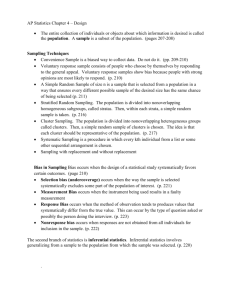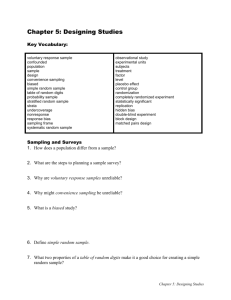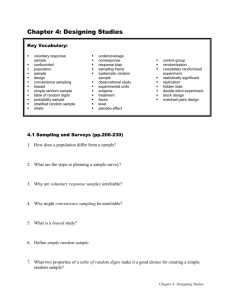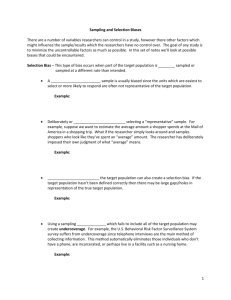AP Statistics - YES Prep Brays Oaks Summer Homework
advertisement
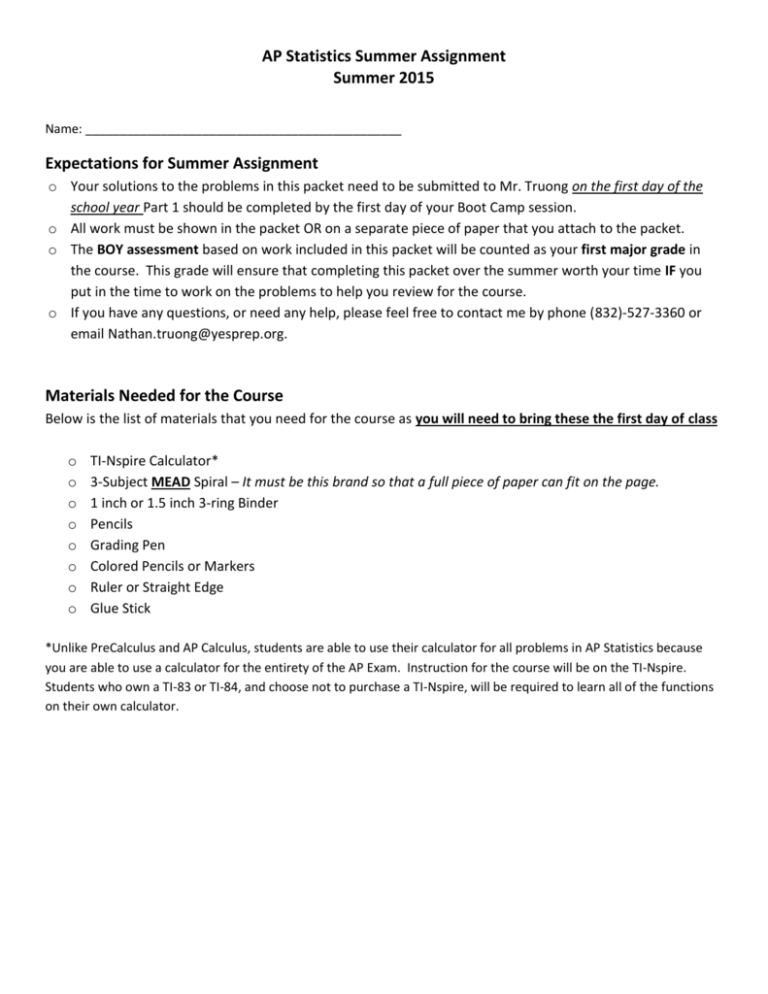
AP Statistics Summer Assignment Summer 2015 Name: ______________________________________________ Expectations for Summer Assignment o Your solutions to the problems in this packet need to be submitted to Mr. Truong on the first day of the school year Part 1 should be completed by the first day of your Boot Camp session. o All work must be shown in the packet OR on a separate piece of paper that you attach to the packet. o The BOY assessment based on work included in this packet will be counted as your first major grade in the course. This grade will ensure that completing this packet over the summer worth your time IF you put in the time to work on the problems to help you review for the course. o If you have any questions, or need any help, please feel free to contact me by phone (832)-527-3360 or email Nathan.truong@yesprep.org. Materials Needed for the Course Below is the list of materials that you need for the course as you will need to bring these the first day of class o o o o o o o o TI-Nspire Calculator* 3-Subject MEAD Spiral – It must be this brand so that a full piece of paper can fit on the page. 1 inch or 1.5 inch 3-ring Binder Pencils Grading Pen Colored Pencils or Markers Ruler or Straight Edge Glue Stick *Unlike PreCalculus and AP Calculus, students are able to use their calculator for all problems in AP Statistics because you are able to use a calculator for the entirety of the AP Exam. Instruction for the course will be on the TI-Nspire. Students who own a TI-83 or TI-84, and choose not to purchase a TI-Nspire, will be required to learn all of the functions on their own calculator. AP Statistics Summer Assignment Summer 2015 Part 1 – Design: Collecting Samples and Conducting Experiments This section needs to be completed by the first day of the AP Boot Camp. 1) Read and annotate the following excerpts from some selected published AP Statistics books. 2) Create flash cards for the following words using the excerpts from the reading. Population Observational Study Voluntary Response Bias Levels Sample Simple Random Sample Undercoverage Complete Randomized Blocked Design Control Group Randomization Stratified Sampling Non-response Bias Placebo Matched Pairs Design Census Cluster Sampling Response Bias Experimental Units Confounding Variables Sampling Systematic Sampling Treatments Experiment Bias Random Assignment Cause-and-Effect Replication Factors 3) Answer the following questions on a separate piece of paper (or type your responses). Each response should be a minimum of 3 sentences and should demonstrate in-depth thought of what you have gained from the reading. a. Why do we need to randomize? Specifically, what does randomization eliminate, and why? b. What is the purpose of a random sample? Discuss why we cannot always collect data on an entire population. c. Give a real world example of sampling with replacement versus sampling without replacement. There is a point when sampling with or without replacement doesn’t matter due to a large sampling frame. Discuss this concept more in detail and site specific real world examples. d. Is taking a larger sample size always going to give you “better data?” Explain. e. Compare and contrast the different sampling methods: simple random sample, stratified random sample, cluster sampling, and systematic. f. Referencing the “AP Exam Tip” on bias, discuss why the following situation could lead to bias results and how to fix that bias. You want to gauge student opinions on RevFoods. You decide to stand at the front of the lunch line during 6th period lunch and survey the first 30 students who come through the line. g. Compare and contrast an observational study versus an experiment. Which of the two can you use to conclude a cause-and-effect relationship and why is that the case? Why can’t we always do an experiment? h. Create a method for you to remember how to find a factor, level, and treatments for an experimental design. Be sure to incorporate identifying the explanatory variable, response variable, and experimental units. i. Explain the 3 major concepts of Experimental Design. j. When should you use a blocked experimental method? Paired method? When using these methods, what must be true about assigning the treatments to the experimental units? Excerpts were taken from the following publications: A Cartoon Guide to Statistics by Gonick and Smith. Chapter 6. Stats: Modeling the World, Third Edition, by Bock, Velleman, and De Veaux. Chapters 11 – 13. The Practice of Statistics, AP Edition, Fourth Edition, by Starnes, Yates, and Moore. Chapter 4. AP Statistics Summer Assignment Summer 2015 - Introduction to Statistics & Data Analysis by Peck, Olsen, Devore. Chapter 2. AP Statistics Summer Assignment Summer 2015 We will study methods of randomization (ie. how to use your calculator as a random number generator) in the first unit of class. AP Statistics Summer Assignment Summer 2015 AP Statistics Summer Assignment Summer 2015 AP Statistics Summer Assignment Summer 2015 AP Statistics Summer Assignment Summer 2015 AP Statistics Summer Assignment Summer 2015 AP Statistics Summer Assignment Summer 2015 AP Statistics Summer Assignment Summer 2015 AP Statistics Summer Assignment Summer 2015 AP Statistics Summer Assignment Summer 2015 AP Statistics Summer Assignment Summer 2015 AP Statistics Summer Assignment Summer 2015 AP Statistics Summer Assignment Summer 2015 AP Statistics Summer Assignment Summer 2015 Blocking can be considered under the “umbrella” of controlling the experiment. AP Statistics Summer Assignment Summer 2015 AP Statistics Summer Assignment Summer 2015 AP Statistics Summer Assignment Summer 2015 Completely Randomized Design Examples Blocked Design Examples AP Statistics Summer Assignment Summer 2015 Try this for fun-sies AP Statistics Summer Assignment Summer 2015 AP Statistics Summer Assignment Summer 2015


